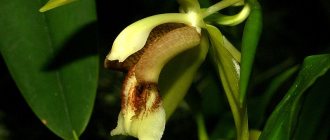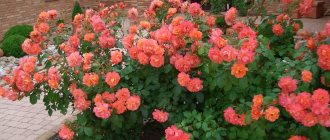The Rosaceae family, which includes the garden rose, includes more than 350 species and varieties. These beautiful flowers can grow in completely different conditions - from the Arctic Circle to the subtropics. More than 200 species are actively grown by flower growers in temperate climates; with proper care, fragrant roses bloom all summer. These plants cannot be classified as capricious, but there are certain requirements for caring for them. This is especially true for hybrid varieties. Many novice gardeners will probably need information on how to care for roses.
Rule 1: Trimming
The main pruning of the bush is carried out in the spring, after the winter shelter is removed from it. In summer, they do not rejuvenating, but formative pruning. In this case, withered and damaged stems are removed, and summer fungal diseases are also prevented. Here the branches are shortened. They can be pruned thoroughly, as young shoots quickly grow in size. In addition, branches with fruit ovaries should be removed from the bush. They draw the juices that nourish the flower onto themselves.
Pruning roses
Advice: at the time of pruning, only young branches should not be touched. It is on them that new rose buds are subsequently tied.
It is important to remember that summer pruning gives the rose bush a special decorative appearance. That is, the shrub more actively awakens dormant buds from such treatment. As a result, new shoots and buds are formed. This means that if you care for roses in the garden in the summer in this way, then the bushes will bloom profusely.
Caring for garden roses in the open ground
Blooming roses - decoration of the site
Most varieties of roses feel great in open ground, and some can even winter without shelter. Depending on the variety, it is necessary to choose the right place to plant the flower and provide it with proper care in the future.
Care measures include several points:
- Watering.
- Mulching.
- Loosening.
- Weeding.
- Spraying.
- Feeding.
Each of these points is important and the requirements that apply to roses should be strictly followed.
For reference! All varieties are light-loving - this rule should be taken into account when choosing a place for planting. In the shade they stretch out and bloom poorly, and sometimes there are no buds at all.
Regarding the soil, roses grow successfully on chernozems, light loams and sandy loams with good structure and a high content of organic matter. If the soil on the site does not meet these requirements, then it must be improved. For heavy soil, it is important to add sand and humus during autumn digging.
Rule 2: thorough weeding + mulching
All weeds should be removed regularly between rose bushes. If you ignore this rule, the grass will clog the root system of the bush. And the garden plot with roses itself looks untidy in this form.
After weeding, the root zone of the rose is covered with mulch. In this case, you can use mowed grass. It’s just important to make sure it doesn’t have seeds. Otherwise, the weed will sprout with renewed vigor. If you care for roses in this way in the summer, then the bush will bloom wildly.
Rule 3: watering
Rose needs abundant and regular moisture. Therefore, you need to water the bushes as the soil dries out. To do this, use water slightly warmed in the sun. When watering, it is important to avoid getting water on the leaves or flowers.
The total volume of water per bush is calculated according to its age. Because the root system of the rose goes deeper into the ground every year. The older the rose, the more water it needs.
Watering
For heavy loamy soils, you can water roses less frequently. Because moisture stays in them longer. Light sandy loam soils require more frequent watering of the rose. During the rainy season, there is no need to moisten the flower.
Advice: the main thing is to monitor the soil of the bush and not allow it to dry out completely.
Preparing roses for winter
To properly prepare a rose for winter, you need to imagine what its winter hardiness depends on. This property in tree crops is largely determined by the ability of the plant, before the onset of frost, to reduce the amount of water between cells and convert starch into sugar. In this case, the concentration of cell sap increases, and it acquires the ability not to freeze at low temperatures. Otherwise, the remaining moisture forms ice crystals, which “loose” the cells.
The majority of southern plants do not have this ability and cannot overwinter in our climate. Some southern crops are able to overwinter, but they should be helped to know when to start preparing for winter and help turn on the water reduction mechanism. To do this, you should reduce the moisture content in the soil in the fall. The golden rule says: “every “southerner” must spend the winter in a dry camp.”
Important!!!
Roses of southern origin (Chinese, Tea and others) cannot tolerate low temperatures. Therefore, you should not try to domesticate varieties intended for the southern regions and greenhouses.
The winter hardiness of crops is also determined by the ability of the plant not to immediately respond to an increase in temperature and begin to accumulate water. This is why winter thaws are so destructive for many plants. The plant begins to grow, and the returning frosts destroy them.
High frost resistance does not mean good winter hardiness. Some crops can withstand very low temperatures, but cannot tolerate temperature changes. Therefore, if possible, winter temperature changes should be smoothed out.
Thus, preparing roses for winter is a set of activities that begin long before they are covered. The first necessary condition for successful wintering is the correct selection and preparation of the landing site. The area where roses grow should be dry before covering for the winter - water should not stagnate on it during autumn rains.
The annual preparation of roses for winter begins in mid-July, when the flowers are no longer fed with fertilizers containing nitrogen. In September, they are fed with potassium fertilizers, which promotes the ripening of wood, increasing the winter hardiness of the plant.
Before the first autumn frosts, the rose bushes are hilled. As research has established, hilling of bushes must be carried out to briefly lower the temperature to -3 ⁰C in order to avoid the formation of frost holes on the shoots. To do this, tear off the leaves at the base of the shoots, carefully breaking off the stipule downwards. After removing the leaves to a height of 30 - 50 cm, if the rose is severely affected by the disease, spraying with copper and iron preparations is carried out. It is useful to pollinate the bottom of rose bushes and the ground around them with ash before winter.
The bushes are hilled to a height of 30-40 cm with sand or a mixture of sand and soil. For this purpose, under no circumstances should the soil around the bushes be taken, so as not to expose the roots. It is used brought from other places. Peat should not be used for hilling, as it absorbs moisture well and, when frozen, forms sharp large pieces that can damage the bark of the shoots.
In early September, the tops of growing shoots are pinched. In the fall, they stop watering and reduce it to a minimum if the weather is very dry, which happens extremely rarely in our climate. In the first half of September, the last weeding is carried out and loosening is stopped so as not to disturb the root system. At the same time, they stop pruning the flowers and remove only the faded petals, since fruit set contributes to the ripening of the wood. The buds are pinched when they reach a size of 3-5 mm, since they will no longer have time to bloom, and stopping their growth will also contribute to the ripening of the wood.
In mid-late October, while the temperature is above zero, climbing and standard roses are removed from their supports and bent to the ground. Also crouching Shrubs and other tall roses. Boards, spruce branches or other insulating and rot-resistant material are placed under the branches. The shoots are bent gradually, in several stages, so as not to break them. If the shoot is broken, it is cut below the break point. Very thick shoots that cannot be bent down are cut off. Fallen leaves are collected and burned. It is recommended to tear off all the foliage from the shoots shortly before covering the roses.
All unripe shoots and unripe tops of stems are cut out before the shelter. It is preferable not to prune any types of roses before winter, but only bend the shoots, trimming the ends that do not fit under the cover.
Rule 4: nutritional supplements
A flowering rose bush is in dire need of potassium-phosphorus feeding. To do this, you can buy ready-made preparations or use natural ingredients. If you take ready-made mixtures, then they are diluted with water according to the instructions. The bushes are watered with the solution according to the indicated scheme. Banana peels or chicken manure can be used as natural potassium fertilizers. They are laid around the root zone of the rose in a not too thick layer. Feed the rose with potassium-phosphorus mixtures until the end of August with an interval of 2-3 weeks.
Advice: stop feeding the bushes with nitrogen around July.
Interesting: Planting roses in summer
Removing cover
The cover of climbing roses is removed in stages. First, as early as possible, namely when the snow melts and the ground thaws a little (late March - first half of April), the roses are unplanted and all blackened and very moldy shoots are cut out to healthy wood. If there is little mold, then it can be removed with a damp swab dipped in a solution of potassium permanganate or copper sulfate. Remove all remaining foliage.
Sheltering roses for the winter
Then the roses are covered again, but for protection from the sun, since severe frosts no longer occur. This must be done so that the roses do not begin to grow while the ground has not yet completely thawed. Otherwise, the buds will begin to awaken, and the roots will not be able to provide them with nutrition. As a result, the shoots will begin to dry out and turn black.
When spring weather sets in, the ground warms up and the time for planting comes (usually early May), remove the cover of the park rose. This operation is best performed in cloudy weather. If the weather is sunny, lightly shade the plantings. Remove remaining foliage and cut out dead and diseased shoots. To prevent the disease, spray the bushes and the ground around with fungicides. Then feed with nitrogen fertilizers and loosen the soil. Mulch the plantings well.
When the buds begin to swell, prune your roses in spring. If you want the roses to bloom earlier, install a temporary greenhouse made of film over them.
Lift climbing and standard roses and attach them to supports, straighten bush roses and, if necessary, install supports. As with bending roses, take your time straightening them out.
Rule 5: spraying
Therapeutic spraying of a flower in the country or in the garden is carried out if signs of fungal diseases or pests are found on the bush. If there is powdery coating, brown or yellowish spots on the leaves, you need to treat the plants with an antifungal compound. You must act according to the instructions. Spraying is carried out in the evening in the complete absence of wind.
If you really don’t want to use store-bought preparations, then you can use decoctions of garlic, horseradish, horsetail, hot pepper, nettle or wormwood for spraying. These same solutions are not only therapeutic, but also prophylactic. That is, it prevents the appearance of sores on the rose.
Rule 6: Pest Control
As a rule, the queen of flowers is more often affected by aphids. If you notice whitish larvae on the leaves, you can carefully wash them off with water, remove them with your hands, or use a soap solution to treat the plant. They spray the bush from all sides. If the aphids are not removed, the buds may not bloom.
Caterpillars, larvae and aphids can also be removed using a decoction of hot pepper. It is prepared from 1 liter of water and five to six peppercorns. The solution is infused for a day, then filtered and the bush is sprayed against pests.
Another good insect repellent is a three percent solution of hydrogen peroxide. They are used to treat roses in dry and windless weather. Spraying is carried out once a week as needed. This mixture can be used all summer.
Wood ash is used as another natural fungicide and pesticide. It is also a potassium fertilizer. You can powder the plant with wood ash after each spraying.
Insect pests
Tip: you can also use sulfur and copper fungicides. They cope with scab, spider mites, powdery mildew and other ailments. Sulfur is especially successful in this.
Interesting: How to rid your garden of ticks
Useful care tips
You can ensure abundant and long-lasting flowering of roses by following simple tips from professionals:
- when planting roses in the ground, do not leave the grafting area uncovered with soil; the root collar should be deepened by about three centimeters;
- water the roses with slightly cool water generously, but not very often, at the root;
- do not overdo it with fertilizing; it is better to stop adding nutrient mixtures in mid-summer.
And one more little tip: try planting a clove of garlic around the root collar of the rose, at a distance of 7-10 cm. Such a commonwealth will be beneficial to both neighbors. More detailed information on the influence of some plants on the growth of others can be read in our article: Table of joint plantings.
By following the above recommendations, you will be able to surround your roses with proper care and attention, and they, in turn, will delight you with their unique blooms in the summer.











